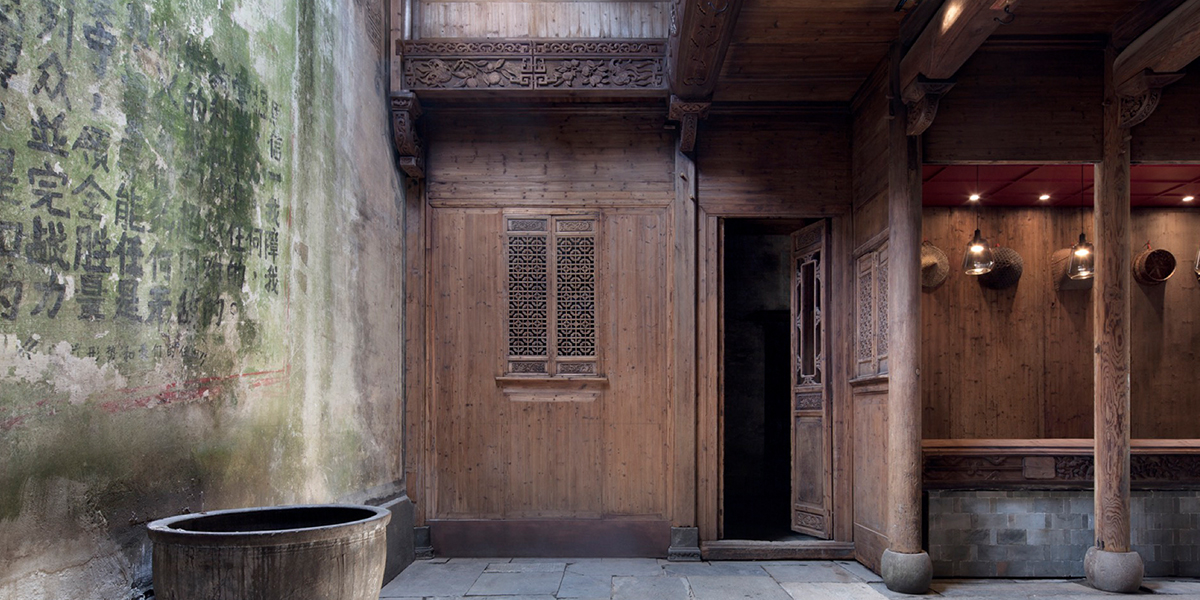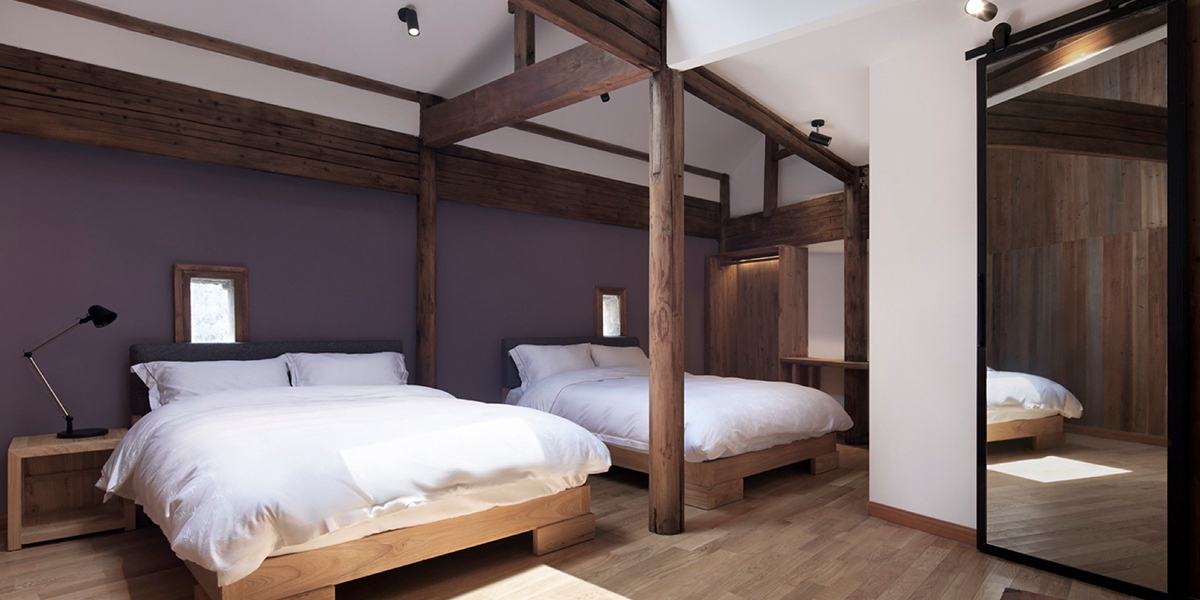Nestled in Wuyuan County in Jiangxi province, the Skywells hotel sits on a 300-year-old Huizhou-style property that blends the grace of ancient China with the luxury of a 21st century hotel. Named after regional architectural feature Tian Jing, the narrow courtyards pulling sunlight into the rooms, the hotel involved extensive repairs of heritage features, in particular, the ornate carved timber frames. For this, the team painstakingly searched for and recruited talented local artisans skilled in centuries-old crafts.
To improve lighting conditions in the interior rooms without adversely affecting the original aesthetic of the building, the team installed windows with elegantly carved frames on the walls facing the Skywells. The color scheme for the interiors utilizes warm and cool neutrals, with the spare bold accent color to brighten up rooms without compromising their elegance. The guiding principle when restoring the estate was to honor the Qing era design, and add structural and functional amenities that tastefully blended into the original design and look of the building.
婺源天净沙古民居驿站,原身为一座近三百年的徽派老式建筑,文化的沉淀和岁月的洗礼令建筑本身蕴含优雅风韵,加上设计师的现代思维和精致改造,令其完成了一次贯穿古今的华丽转身,释放出自然舒适又平易近人的低调奢华气质。
酒店的英文名Skywells来源于当地特色建筑元素——天井,也就是房子和外墙之前自然围合的一片狭窄的露天空地,天井最直接的好处是将室外的明媚阳光巧妙引入室内。整个项目的建造过程更像是一个大规模的文化遗产修复工程,尤其是那些精美绝伦、细致生动,却亦饱经岁月摧残的木质承重结构以及木质雕花饰面,让设计团队费劲了心思,几乎束手无措,反反复复,几经辗转,终于找到隐藏于民间的当地资深木工老匠人,运用其精湛的手工技艺和独特的修复方法,让原本破旧残缺的的木结构和木雕花重获生机,无惧岁月,跨越古今,依旧煜煜生辉。
为了弥补建筑本身自然光线不足的缺陷,设计师沿着天井,在房间的墙面上开设了可开启的窗楹,并配置了精致的木质雕刻花纹,与原本的建筑特色完美融合。驿站的总体室内色彩搭配以暖色以及简约的中性色调为主,搭配上大胆而跳跃的亮色,保持古韵风华的同时,为房间注入盎然生机。怀揣对清代建筑语言的崇敬,在保留古建筑文件精髓的基础上,恰到好处地添加现代的结构加固和功能扩展,达到原始质朴和与时俱进的完美契合。
修旧如旧,浑然天成,这是修复项目的核心,也是设计师的本心。








